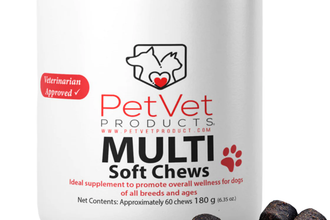
At Pet Vet Products, we understand that your pets aren’t just animals—they’re cherished family members. That’s why we’ve dedicated ourselves to helping you care for them with confidence, especially in those sudden moments when every second matters. Led by Dr. Leah Hill, a trusted veterinarian with more than 25 years of experience, our mission is to give pet owners practical, trusted solutions through our pet care products, including carefully designed pet first aid kits and pet first aid charts, and guides.
In this blog, we’ll guide you on how to treat pet injuries at home, the importance of being prepared, and how to avoid the most common mistakes many pet owners unknowingly make. By the end, you’ll feel more secure knowing you can care for your pet safely until professional help is available.
Understanding Why First Aid for Pets Matters

Accidents can happen in an instant. A curious pup might step on broken glass during a walk. A cat might scratch itself trying to escape from a tight spot. While some injuries are minor, others can be more serious, needing fast action even before you can get to a vet.
This is where pet care products—especially pet first aid kits—can truly make a difference. Having the right tools at home can help you respond calmly and quickly, reducing pain and preventing complications.
But knowing how to use those tools is just as important as having them. That’s why using pet first aid charts and guides is so helpful. They offer step-by-step advice that’s easy to follow, even in stressful situations.
How to Treat Pet Injuries at Home (Safely and Responsibly)

Treating injuries at home doesn’t mean skipping the vet. It means giving your pet the support they need while you arrange for professional care. When handled properly, home treatment can ease pain, stop bleeding, or prevent an infection from starting.
Let’s explore some common types of injuries and how to manage them:
Minor Cuts and Scrapes
If your pet gets a small cut, stay calm. Start by gently cleaning the area with lukewarm water. Avoid using human antiseptics—they can be harmful to animals. Instead, use antiseptic wipes or sprays from your pet first aid kit.
Dry the wound with a clean cloth, and apply a sterile bandage if needed. Keep an eye on the area over the next few days. If swelling, redness, or discharge appear, consult your vet immediately.
Sprains and Soft Tissue Injuries
Pets, especially dogs, can twist a leg while jumping or running. If your pet starts limping, restrict movement and help them rest. Apply a cold pack wrapped in a cloth for a few minutes at a time to reduce swelling.
Avoid giving human painkillers—many are dangerous for pets. Instead, follow guidance from a vet or refer to a reliable pet first aid chart or guide.
Insect Bites and Stings
Wasps, bees, and other insects often target noses and paws. If your pet gets stung, remove the stinger if visible, using tweezers. Apply a cold compress to ease swelling.
Monitor for signs of allergic reactions, such as difficulty breathing, vomiting, or weakness. If any of these happen, seek veterinary care immediately.
Burns and Scalds
These are less common but still possible, especially around hot appliances or open flames. Cool the affected area with cold water for several minutes. Don’t apply ointments or creams unless advised by a vet. Use non-stick dressings from your pet's first aid kit, and call your vet as soon as you can.
The Role of Pet First Aid Kits in Emergency Situations
Imagine facing an emergency and not having anything on hand to help your pet. This is why keeping a pet first aid kit in your home or car is so important. A good kit will contain essentials like antiseptic wipes, bandages, tweezers, gloves, a digital thermometer, and a blanket.
We’ve spent years carefully selecting the best tools for pet emergencies. Our kits are designed to suit real-life situations. They’re compact, easy to understand, and include helpful instructions from Dr. Leah Hill herself.
More importantly, our kits work hand-in-hand with our pet first aid charts and guides, offering simple, step-by-step advice when it’s needed most. This combination can make a real difference in your pet’s recovery.
Mistakes to Avoid When Treating Pet Injuries at Home
When pets get hurt, it’s easy to panic. But making the wrong move can sometimes make things worse. Here are some common mistakes you should avoid:
Using Human Medications
Even something as common as paracetamol can be dangerous for pets. Always ask your vet before giving any medicine.
Forcing Movement
If your pet is limping or struggling to walk, don’t try to stretch or move the injured area. Instead, support it gently and let a vet examine it properly.
Skipping the Vet Visit
Just because a wound looks small doesn’t mean it’s harmless. Infections and deeper injuries can go unnoticed without proper checks.
Wrapping Too Tightly
When applying a bandage, make sure it’s snug but not tight. Cutting off circulation can do more harm than good.
Waiting Too Long
It’s okay to treat small issues at home, but don’t delay calling your vet if your pet seems in pain, weak, or is behaving unusually.
Why Guidance Makes a Big Difference
Many pet owners feel unsure during emergencies. That’s completely normal. This is where having clear, visual pet first aid charts and guides can be a real lifesaver. These resources help you understand what’s normal, what’s not, and what steps to take next.
Whether you’re cleaning a wound or checking a fever, simple instructions can give you the confidence to act. We believe that every home with pets should have these tools close at hand—not only to protect your pet but also to help you stay calm when it matters most.
Building a Safe Space at Home
Treating injuries isn’t just about reacting—it’s about being ready. The best way to avoid accidents is to create a safe space for your pets to play, rest, and explore.
Make sure cleaning products are out of reach, sharp tools are safely stored, and furniture doesn’t have any gaps or corners where paws can get stuck. Regular grooming and health checks also reduce the chances of skin problems or infections.
If your pet is active outdoors, check its paws regularly and always keep a basic pet first aid kit in your travel bag or car.
Choosing the Right Pet Care Products

Not all products are made equal. Look for items specifically designed for animals, whether it’s antiseptics, bandages, or thermometers; the quality and safety of each item matter.
At Pet Vet Products, our years of experience have taught us what works and what doesn’t. We don’t just sell products—we provide peace of mind. Everything we offer has been tested and approved by Dr. Leah Hill, based on real-life situations.
Final Thoughts: When in Doubt, Reach Out
Even with the best home care, some injuries need professional treatment. Trust your instincts. If your pet seems uncomfortable, shows signs of distress, or doesn’t recover quickly, contact your vet.
But while you wait, being prepared with the right tools and knowledge can help more than you think. Taking calm, informed steps can make your pet feel safer and help them heal faster.
Conclusion
Knowing how to treat pet injuries at home is part of being a caring and responsible pet parent. With the right products, clear guidance, and a little preparation, you can handle most small emergencies with ease. But remember—first aid is just the first step. Your vet will always be the best source of medical care.
Whether it’s a minor cut, a sting, or a twisted paw, quick and careful action can make a huge difference. And with the help of trusted tools like pet first aid kits, easy-to-follow pet first aid charts and guides, and high-quality pet care products, you’re never alone when something unexpected happens.
At Pet Vet Products, we’re here to support you and your pets through every stage of life. Explore our full range of trusted pet care products, and make sure your home is ready for anything—from playful accidents to serious situations.
Visit our website today to order your emergency pet first aid kit and downloadable first aid charts, carefully crafted with insights from Dr. Leah Hill. Your pet deserves the same love and care you give yourself, every single day.










